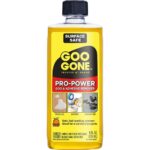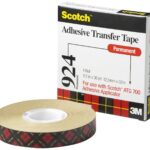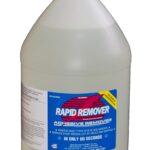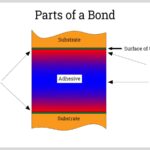Tile adhesive is a material used to bind tiles together when laying a floor or wall. It is typically made with cement and sometimes contains polymers and other ingredients. The adhesive is usually applied to the back of tiles before they are laid, and it is often used to fill in any gaps between the tiles. Tile adhesive is available in a variety of different types, such as powder, liquid, gel, and paste. Each type has its own advantages and disadvantages, so it’s important to choose the right one for your project.
For example, liquid tile adhesives are easy to use, but they have a shorter shelf life than powder or gel adhesives. Tile adhesive is also often used to fill in any gaps between the tiles and the wall or floor. This is especially important for bathrooms and kitchens, where water can seep through any gaps and cause damage to the wall or floor underneath. Tile adhesive needs to be properly applied in order to ensure a strong bond. It should be applied with a trowel and then allowed to set for a specific amount of time, usually 24 hours. Once the adhesive is fully cured, the tiles can be grouted and the floor or wall can be used. In conclusion, tile adhesive is an important part of any tiling project. It is available in different types, and it is important to choose the right one for your project. Properly applying the adhesive is also essential, as it helps ensure a strong bond and prevents water damage.
What to use to glue tile to wall
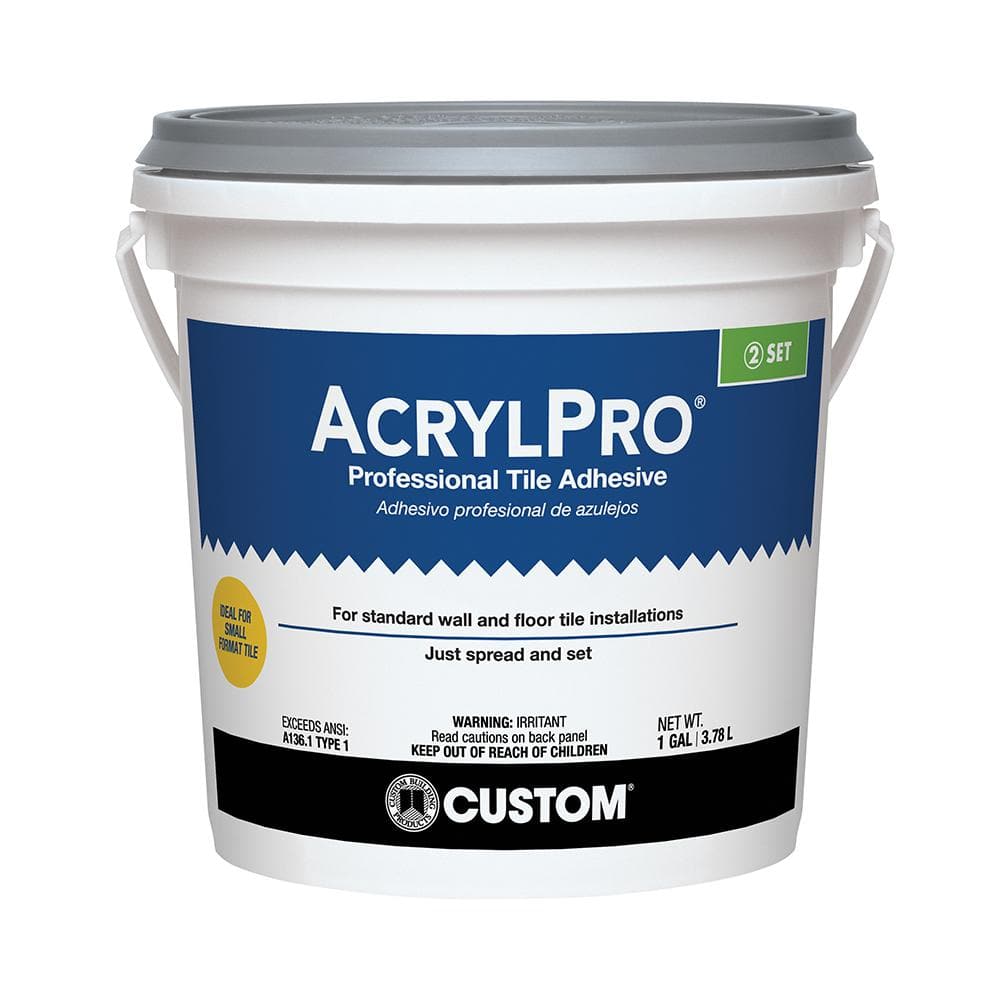
Depending on the type of tile and the surface you are applying it to, you will need to select the right tile adhesive for the job. Ceramic and porcelain tiles often require a water-based adhesive made from a mixture of cement and polymers. This type of adhesive is designed to bond tiles to walls and floors. It has a strong adhesive strength and is suitable for use in wet areas. Stone tiles need an appropriate adhesive that can bond to the stone’s surface.
A type of epoxy adhesive is recommended for stone tiles. It is waterproof and highly durable, making it the ideal choice for a long-lasting bond. Mosaic tiles require a specific adhesive that can hold the tiles in place while they are being installed. A polymer-based adhesive is usually best for this type of tile. It is designed to hold the tiles securely while they are being applied and will also provide a strong bond that will last for many years. Finally, glass tiles require a special adhesive that will provide a strong bond without damaging the glass. A silicone-based adhesive is the best choice for this type of tile. It is designed to create a secure bond and will not discolor the glass.
How do you glue tile back to the wall?
Tile adhesive is used to glue tile back to the wall. It is a strong, flexible adhesive that can bond the tile to almost any surface. It often comes as a powdery substance that is mixed with water and then applied to the wall. The mix of the powder and water forms a strong bond that holds the tile in place. Tile adhesive is available in different types.
Depending on the type of tile being used, you may need to use a type that is specifically designed for that tile. Some tile adhesive can also be paintable, allowing you to paint over the tiles after installation. Before applying the tile adhesive, it is important to make sure the wall is clean. Any dirt or dust can prevent the adhesive from forming a strong bond. Once the wall is clean, you should apply the adhesive using a notched trowel. This type of trowel ensures you spread the adhesive evenly on the wall. You then need to press the tiles into the adhesive and make sure they are firmly in place. Finally, allow the adhesive to dry for the amount of time recommended on the packaging. This will ensure the adhesive is strong enough to hold the tiles in place. In conclusion, tile adhesive is a strong, flexible adhesive that is used to glue tile back to the wall. It is available in different types and needs to be applied carefully to the wall and tiles. Once it has dried, the adhesive will hold the tile securely in place.
Can I use silicone to stick tiles to wall?
Generally, tile adhesive comes in the form of a powder or a paste. The adhesive is applied to the back of the tile and the wall, before the tile is placed on the wall. Silicone is not usually suitable for use as a tile adhesive, as it does not form an adequately strong bond. So, even though silicone may be used to stick tiles to a wall, it is not recommended as a substitute for tile adhesive. There are various types of tile adhesive available, and it is important to select the right adhesive for the task.
The right adhesive should be able to bond the tile and the wall together, while also providing protection against water, moisture, and temperature changes. In conclusion, while silicone can be used to stick tiles to a wall, it is not recommended as a substitute for tile adhesive. It is important to choose the right type and brand of tile adhesive for your project to ensure a strong and durable bond between the tile and the wall.
Can I use silicone instead of tile adhesive?
Tile adhesive usually contains a combination of plaster, glue, and powdered cement. This combination helps to ensure that the tiles are firmly attached to the surface. Tile adhesive can be challenging to apply and must be used carefully in order to ensure the tiles stay in place and the bond is strong. Silicone can be used as an alternative to tile adhesive, however it is not as strong and can be prone to cracking. It is best used for smaller and lighter tiles, as heavier tiles may require more support. If you are considering using silicone instead of tile adhesive, it is best to check with a professional before doing so. They will be able to advise you on the best adhesive for your project.
Can you glue ceramic tiles to the wall?
Tile adhesive is usually a thick paste-like material and can be applied with a trowel or a special adhesive gun. It is important to make sure that the adhesive is applied evenly and that there are no gaps between the tiles and the wall. The adhesive should be left to dry before grouting the tiles. Once it is dry, the tiles should be firmly attached to the wall. Tile adhesive is essential for ensuring that ceramic tiles stay firmly attached to the wall, creating a neat and tidy finish.
Will Liquid Nails hold tile?
One of the most popular tile adhesives is Liquid Nails. Liquid Nails is an adhesive product designed specifically for tile and is made from a blend of polymers and resins. Liquid Nails is easy to use, and it can be applied to dry surfaces, making it a great choice for DIY tile projects. It is also waterproof and flexible, so it will not crack or break if the surface expands or contracts. Additionally, it provides a strong bond between the tile and the surface and is able to withstand extreme temperatures, making it a great choice for any tiling project.
In conclusion, Liquid Nails is an excellent choice for tile adhesive. It forms a strong bond that is both flexible and waterproof, so it will hold up under different temperatures and conditions. It is easy to use and can be applied to dry surfaces, making it perfect for DIY projects.
Can I use Liquid Nails to glue tiles?
Liquid Nails is not a recommended adhesive for tiles, as it is not designed for that purpose. Using Liquid Nails can cause the tiles to come loose, resulting in expensive repairs and damage. The best type of adhesive to use for tiles is a product specifically designed for that purpose. Generally, this type of adhesive is sold in a tube, and applied with a gun. It is important to use the right amount of adhesive.
Too much can cause a mess, while too little will not provide the necessary strength to hold the tiles in place. Finally, the area should be clean and dry before the adhesive is applied for the best results. Care should be taken to ensure that all dust and debris is removed to ensure a strong and secure bond between the tiles and the wall or floor.
What do you use to adhere ceramic tile to a wall?
Tile adhesive is the material used to adhere ceramic tile to a wall. It is a specific type of adhesive, designed to provide a strong bond between the ceramic tile and the wall. It is often used in bathrooms, kitchens or any other area where there is a need to waterproof a wall. Tile adhesive comes in a variety of forms, including powder or liquid, as well as premixed or ready-to-use. Different types of tile adhesive are suited for different types of tiles, such as ceramic, porcelain, natural stone, or mosaic tiles.
When choosing tile adhesive, it is important to consider the type of tiling job, the type of tile and the environment. For instance, if the job is in a high-moisture area, such as a bathroom, a waterproof tile adhesive should be used. Applying tile adhesive is a skill that is best left to professionals, as it requires precision and accuracy to ensure a secure bond. A trowel is usually used to spread the adhesive on the wall, while spacers are often used to maintain even gaps between the tiles. Once the tile adhesive has been applied and the tiles laid, it is important to allow the adhesive to dry fully before grouting. This will ensure a strong bond between the tile and the wall, which will last for many years.
What glue is used to stick tiles?
Tile adhesive is used to stick tiles to any surface. It is an essential item when it comes to installing tiles, whether ceramic, stone, or mosaic. Tile adhesive is usually made up of an acrylic adhesive, combined with an aggregate such as cement, or a polymer modified adhesive. This is used to create a strong bond between the tile and the surface, ensuring a long lasting, secure finish. Different types of tile adhesive are available, depending on the type of tile being installed, and the surface being tiled.
Some tile adhesive is suitable for all surfaces, while others may only be suitable for particular surfaces, such as concrete or timber. It is important to check the instructions on the adhesive packaging carefully before use, and to mix the adhesive correctly. This will ensure that the adhesive is able to provide the best possible bond between the tile and the surface. Applying the tile adhesive is a relatively simple process, but it is important to ensure that it is applied evenly and accurately. To ensure a strong bond, the adhesive should be firm and textured on the surface. Tile adhesive is an important part of any tiling project, as it is essential for ensuring a secure and long-lasting finish. It is important to choose the right adhesive for the job, and to follow the instructions on the packaging carefully.
What adhesive to use for wall tile
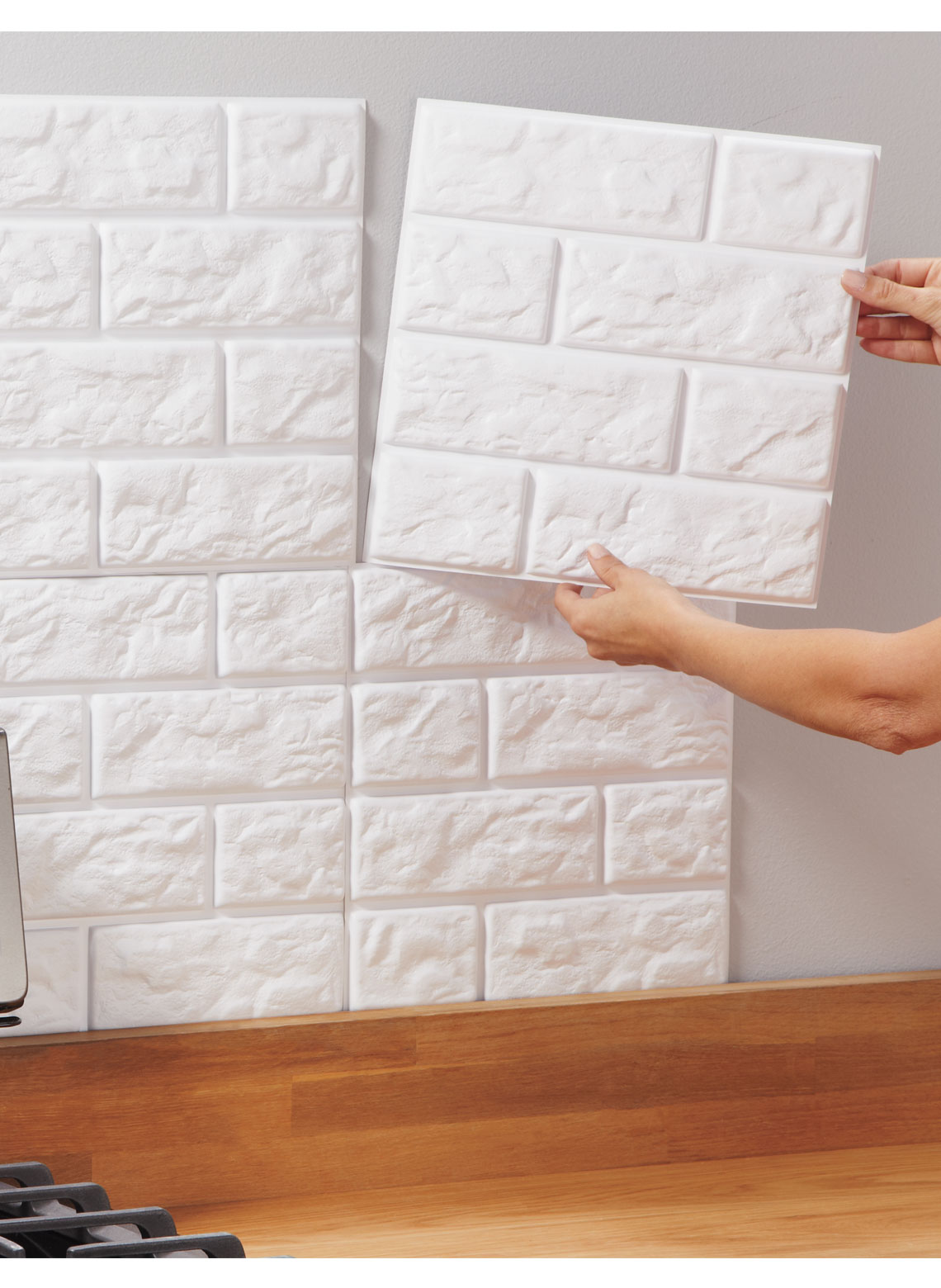
It’s the glue that affixes the tiles to the wall and keeps them in place. When choosing an adhesive, there are a few things to keep in mind. The type of tile and the type of wall will determine the best adhesive for your project. For wall tiles, a thin-set adhesive should be used. This type of adhesive is designed to be flexible and waterproof, making it ideal for wet environments.
Thick-bed adhesives are also an option, but they tend to be more costly and are better suited for larger tiles and heavier applications. For the best results, make sure to follow the manufacturer’s instructions when installing the adhesive. This will ensure your tiles stay in place and your project looks great for years to come.
What is best adhesive for wall tile?
Wall tiles are often subject to a lot of movement, so it’s important to choose an adhesive that is strong, flexible and long-lasting. Epoxy adhesives are the best choice for wall tiles as they provide a strong, flexible bond that is resistant to moisture, temperature and shock. They are also easy to apply and can be used in a variety of applications. Ceramic tile adhesive is also a good choice for wall tiles. This type of adhesive is water-resistant and provides a strong bond that is also resistant to heat and moisture.
It is easy to apply and is available in a variety of colors and sizes. Mastic is another type of tile adhesive that is often used on walls. It is a thick, sticky substance that is easy to apply and provides a strong bond that is resistant to temperature and moisture. In conclusion, epoxy adhesives, ceramic tile adhesive and mastic are the best adhesives for wall tiles. They provide a strong, flexible bond that is resistant to moisture, heat and shock. They are also easy to apply and can be used in a variety of applications.
How do you get tile to stick to the wall?
Quality tile adhesive is specifically designed to keep the tile in place. Applying tile adhesive is relatively simple. The back of the tile should be coated with a thin layer of adhesive and then pressed firmly onto the wall. Make sure to keep the tile level while applying pressure to the whole surface. When applying the tile adhesive, consider the environment.
Different adhesives are designed for different types of wall surfaces, so make sure you choose the right one for your situation. This can include the wall material, such as drywall or concrete, and the climate of the room. Once the tile is firmly in place, allow the adhesive to dry completely. This can take several hours depending on the product. After that, grout can be applied to fill in the gaps between the tiles. Tile adhesive is an important part of any tiling job and getting it right will make all the difference. Make sure to choose the right product for the environment and get a good bond between the tile and the wall.
What adhesive to use for tile on drywall?
It helps to bond the tiles to the wall, providing a strong and secure foundation. Different types of adhesive can be used for different types of tiles, such as ceramic, natural stone and mosaic tiles. For drywall, a latex-based adhesive is generally recommended. This type of adhesive is waterproof and highly flexible, providing a strong bond that will last for many years. The adhesive should be applied directly to the back of the tile, and then pressed into place on the drywall.
Once the adhesive has set, the tile should be grouted to fill in any gaps and provide a smooth finish. When choosing tile adhesive, it is important to consider the type of tile being installed and the condition of the wall. If the wall is in poor condition, then a stronger adhesive may be required in order to ensure a secure bond. It is also important to read the manufacturer’s instructions carefully to ensure that the adhesive is applied correctly and at the correct thickness. Using the correct adhesive is essential to ensure that the tiles stay securely in place and that the installation lasts for many years. With the right adhesive and a bit of care, you can be sure that your tile installation will be a success.
Is thinset the same as tile adhesive?
It’s a special type of adhesive that is designed to bond ceramic and stone tiles to a variety of materials including drywall, plywood, concrete, and more. Thinset is a type of tile adhesive that is used primarily with tile installations. It is a cement-based adhesive that is mixed with water and then applied to the substrate in order to bond the tiles to the surface. Thinset is considered to be one of the strongest tile adhesives and is often used in wet areas like bathrooms or showers. It is important to note that thinset is not the same as tile adhesive.
Thinset is a specific type of tile adhesive while tile adhesive is a general term used to describe any adhesive used to secure tiles to a surface. In other words, tile adhesive can be thinset or any other type of adhesive. When it comes to choosing the best type of tile adhesive for your project, it’s important to consider the type of tile you’re using, as well as the surface you’re attaching it to. Different types of tile adhesive may work better for certain applications, so it’s important to do your research before starting your project. No matter what type of tile adhesive you choose, it’s important to make sure it is applied properly for the most durable and secure bond. Make sure to follow the manufacturer’s instructions, and if you are unsure, it’s always best to consult a professional for advice.
What is the best tile adhesive for shower walls?
It is important to select the right type of tile adhesive to ensure a long-lasting, successful installation. The best tile adhesive for shower walls is waterproof and flexible to allow for movement in the walls without compromising its bond. It should also be mould and mildew resistant to ensure a hygienic environment and easy cleaning. Liquid waterproof tile adhesive is often used in shower wall installations and is the preferred choice among experienced tilers. It is applied using a trowel and provides excellent adhesion without the need for additional fixings.
Latex-modified tile adhesives are also popular for tiling shower walls due to their superior flexibility and waterproof properties. They are also easier to clean up and offer superior mould and mildew resistance. Finally, epoxy tile adhesives are the most expensive option but offer the best long-term protection for shower walls. They are highly water resistant and resistant to extreme temperatures. They also have superior strength and a longer working time than other tile adhesives.
What is better for tile adhesive or thinset?
Tile adhesive and thinset are both commonly used to set tiles. Tile adhesive is generally the simpler of the two to use, as it is applied directly to the tile and can be used with a variety of tiles. However, thinset is generally considered to be a better choice for setting tiles, as it provides a stronger, more durable bond than tile adhesive. Thinset is applied to the substrate or the surface that the tile will be adhered to and then the tile is set into the thinset. Thinset is also more water-resistant and is better able to withstand heavy traffic, making it a better choice for areas where tiles will be subject to more wear and tear. In some cases, a combination of tile adhesive and thinset may be necessary to achieve the desired result. Ultimately, the choice of which adhesive or thinset to use will depend on the individual project and the specific tiles being used.
What’s the best adhesive to stick wood on tiles?
When it comes to sticking wood to tiles, the best adhesive to use is an epoxy-based adhesive. This type of adhesive provides a strong, waterproof bond and can be used easily with tiles. It is also resistant to temperature and humidity changes, making it a good choice for outdoor applications. Another option is to use a polyurethane adhesive. This type of adhesive is flexible and offers a good bond between wood and tiles.
It is also resistant to water, making it ideal for wet environments. No matter which type of tile adhesive you choose, it is important to make sure that the surfaces are clean and dry before applying the adhesive. This will help the adhesive adhere properly and ensure a strong bond between the wood and tile. It is also essential to read the instructions carefully and apply the adhesive exactly as directed. This will ensure that the bond is strong and secure, and will last for years to come.
How to choose the correct tile adhesive or mortar?
Therefore, it is important to choose the right one for the job. When selecting a tile adhesive or mortar, the consistency and setting time should be taken into consideration. Thick-bed mortars are ideal for heavier tiles, while thin-bed adhesives are better for lighter material. The type of substrate should also be taken into account when selecting tile adhesive. For example, if you’re tiling over a concrete surface, you’ll need to use a cement based adhesive to ensure the proper bond.
In addition, the area where the tiles will be installed should be taken into consideration when selecting tile adhesive. For wet areas such as bathrooms and showers, you’ll need to use a waterproof adhesive to ensure maximum protection. Finally, it’s important to check the manufacturer instructions for the required coverage rate of the adhesive or mortar. This will help to ensure you don’t use more than is necessary.
What is the best tile adhesive remover?
Tile adhesive remover can come in a range of forms, from liquids and gels to powders. The most effective removers are those that are specifically designed for tile adhesive. These are typically more powerful and work quicker than general-purpose removers. Before using a tile adhesive remover, it is important to check the manufacturer’s instructions for safety. If the instructions for the chosen remover are not followed correctly, it could cause damage to the tiles and underlying surfaces.
The best tile adhesive remover should be strong enough to remove stubborn adhesives without damaging the tiles or surface. It should also be easy to apply and remove, meaning that you can quickly and easily get rid of any unwanted tile adhesive. Overall, tile adhesive remover is an essential tool when dealing with tiles. It can make the process of removing old adhesive quick and easy, allowing you to get on with the job of laying new tiles.
What mortar to use for wall tile?
The type of mortar used for wall tiles depends on the type of tile and the wall surface. For ceramic or porcelain tiles, a thin-set mortar is the best choice. It is a cement based adhesive that is strong and water-resistant. For heavier tiles such as stone or marble, an epoxy mortar is recommended as it offers the best adhesion. It is also more expensive than thin-set mortar.
For tiles with high moisture resistance, a polymer-modified thin-set mortar is best. It is water resistant and offers greater flexibility than regular thin-set mortar. Whichever mortar you decide to use, make sure you follow the manufacturer’s instructions for the best results.

